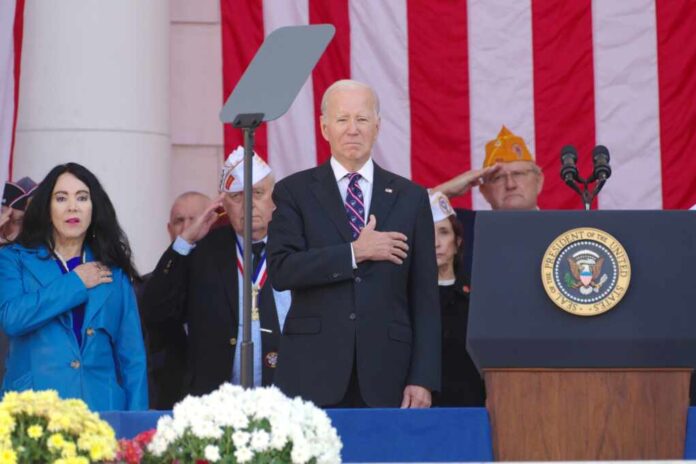
On Thursday, the Biden administration announced a new proposal aimed at forgiving student loans for individuals facing “hardship.” The latest attempt to lure younger voters looks more like a cynically calculated political move than a genuine effort to address the systemic education cost crisis hammering ordinary Americans.
The plan, emerging after the Supreme Court invalidated Biden’s original student loan forgiveness strategy, aims to target borrowers likely to default on their loans within two years due to financial strains. According to Education Under Secretary James Kvaal, the administration strives to alleviate the burdens of those bogged down by debt, ensuring that “college leads to a better life.”
Biden administration expands student loan forgiveness for those facing 'hardship' https://t.co/GgnkloLXcd
— The Washington Times (@WashTimes) February 16, 2024
Critics argue that the proposal is less about rectifying the education system’s failings and more about pandering to a specific voter base. The Biden administration’s attempt to bypass established legal and constitutional frameworks raises concerns about executive overreach and the disregard for taxpayer interests. The plan’s broad eligibility criteria and lack of a precise estimate of the number of beneficiaries add to the ambiguity and potential for misuse.
Moreover, the Supreme Court’s rejection of Biden’s initial $400 billion forgiveness plan highlights a significant overstep of executive authority. Despite this setback, Education Secretary Miguel Cardona remains undeterred, pledging to “fix a broken student loan system.” Yet, this new proposal is another iteration of the administration’s disregard for legal boundaries in favor of political gain.
Just Wait Until You Hear Who's Now Included in Biden's Student Loan Bailout Plan https://t.co/HHnFA9DkPv
— 18 5.0 Mustang (@1850Mustang2) February 17, 2024
While the administration emphasizes the plan’s claimed focus on relieving borrowers facing hardship, the criteria remain vague and all-encompassing. Some factors will trigger automatic relief, including income, loan balances, and out-of-pocket living costs.
Trying to redefine financial hardship and extend forgiveness could lead to unintended consequences, such as encouraging fiscal irresponsibility and inflating college costs. Institutions might raise tuition, anticipating that loans will eventually be forgiven, exacerbating the debt cycle rather than ending it.
In addition to the proposed hardship-based cancellations, the Biden administration is pushing for the SAVE repayment plan, touted as “the most affordable repayment plan ever.” Almost 7 million borrowers have enrolled in that program, and many of them are now making no monthly payments at all as a result. Of course, the administration has nothing to say about the unsustainability of a plan that involves zero loan repayments.
As the rulemaking session approaches, the administration’s commitment to expanding the scope of forgiveness within legal confines will be tested. But the underlying issues remain unaddressed — soaring college costs, the value of higher education, and the responsibility of borrowers and institutions alike.

























